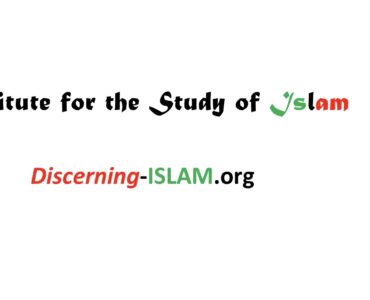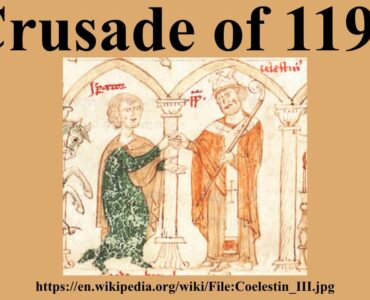
Messianism
In the sense of divicc11ne intervention in human history — through the appointment of a mahdī (rightly guidedfrfc person) to deliver the people from tyranny and oppression at the End of Time — messianism is a salient feature of Islamic soteriology. Messianic expectations were part of the early Muslim belief in the prophet Muḥammad as the apostle of ākhir al-zamān (the End of Time). In that eschatological position the Prophet was expected to usher humanity toward an ideal community with a universal mission. Such expectations were also part of the reformist and revivalist tendencies among the Jewish and Christian communities of Arabia in the sixth and seventh centuries. The Qurʿānic preoccupation with the impending Day of Judgment and the Signs of the Hour, which announced cosmic disorder and a period of terror and fear preceding the Final Days, can be understood in the cultural and ideological setting of the messianic prophecy in Abrahamic soteriology and eschatology.
The Qurʿānic Vision Of The Messianic Future
The major this-worldly expression of Islam was its self-implementation in a religio-political community, the ummah, with a worldwide membership of all those who believe in Allah and the divine revelation through Muḥammad. Muslim belief in the divinely guided messianic leader, the Mahdī, is thus rooted in the acknowledgment that Muḥammad’s function as the divinely guided prophet was to create this ideal ummah. Islamic revelation sees itself engaged in assessing human conditions that obstruct the fulfillment of the ultimate divine purposes for humanity. The Qurʿān maintains that human civilization is the record of the perpetual jihād (struggle) against human self-centeredness and pettiness, the two main sources of conflict and the attendant destruction of humanity. It is the enemy within that needs to be conquered, through jihād al-akbar (greater struggle), before one can truly undertake to overcome through al-jihād aṣghar (lesser struggle) the external enemy that impedes the creation of the just and peaceful human society. Islamic soteriology is an expression of the desperate human situation, and it provides the critically needed sense of common human destiny — the human saga of the search for justice and peace. This is the essence of Islamic messianism.
~At certain times in history Allah intervenes and provides living examples, the prophets, who remind humanity of its true nature and its perfectibility through faith in Allah. Toward the End of Time, when humanity, having failed time and again, finds itself in need of a spiritual and moral revival to assume its historical responsibility of creating the divine order on earth, Allah will send Jesus and the Mahdī to restore the pure faith and redress the wrongs committed against the righteous servants of Allah. In the meantime, human beings must continue to strive to recognize their primordial nature through islām (submission). This is the spiritual and moral expression of Islamic messianism.
Historical Messianism
The responsibility to create an independent political community, the ummah, which carried in itself the revolutionary challenge to any order inimical to its realization, was historically assumed by the Prophet himself when he established the first Muslim polity in Medina in 622 A.D. The connection between the divine prophetic mission and the creation of an Islamic world order is integral to Islamic messianism. Hence, the Mahdī, through his investiture as the Prophet’s successor and Allah’s caliph, is awaited to implement the transcendental ideal on earth.
Historical and sociological factors in the first century, following the Prophet’s death in 632, were instrumental in heightening messianic expectations in the Muslim community, especially among those who were persecuted as Shi’a — partisans of ʿAlī ibn Abī Ṭālib and sympathizers of his claim to the caliphate. The hopes of the Banū Hāshim, the Prophet’s clan, who had supported the claims of the descendants of ʿAlī, and who looked forward to the return of the prophetic “golden age,” were greatly frustrated when the caliphate slipped out of their hands in 661. Thereafter, the idea of a perfect leader, the divinely appointed imam, continued to be emphasized among the religiously oriented Muslims in general, and among Shi’a in particular. Although both ʿAlī and his son Ḥusayn were regarded as mahdī, perhaps in a non-eschatological sense, it was ʿAlī’s son Muḥammad ibn al-Ḥanafīyah who was declared to be the promised Mahdī. He was believed to have possessed the esoteric knowledge necessary to deliver his followers from oppression and to establish a just society.
The outbreak of the civil wars and the disturbance that followed contributed greatly to the notion of a messianic savior whose function was, in the first place, to redress the wrongs committed against the downtrodden and to establish justice, by which the Shi’a meant abolition of the caliphate of the oppressors and the return to a pure Islam; and, in the second place, to convert the world to Islam. Disagreement on the identity of the Mahdī was one of the chief factors separating Shīʿī sect from sect. The Shīʿī hope for justice — expressed in their oft-quoted saying, “the world would be filled with justice as it is now filled with injustice” — when the Mahdī emerges from the divinely imposed occultation was expressed in radical social protest. The expectation meant not merely a hope for the future, but a revaluation of past and present life. Every generation believed that it was likely that the Mahdī would appear in their own time and test the faithful by summoning them to launch the great social transformation under his command, with the promise of divine help when it would be needed. Hence, messianic tendencies became the source of heretical and even combative attitudes among the Shi’a. These revolutionary insurrections were feared for their potential destructive and chaotic repercussions and were crushed by the ruling authorities.
Several adventurous individuals, with Shīʿī sympathies, organized and led revolutions from the last decades of the Umayyad rule. The most important of these was the ʿAbbāsid revolution, which carried on effective propaganda against the Umayyads on a largely Shīʿī basis, keyed to the messianic expectation. The ʿAbbāsids overthrew the Umayyads and establish their own dynasty in the eighth century. The Fāṭimid revolution in the tenth century also had considerable popular support. It won a large number of adherents and established a Shīʿī state in North Africa. In this case also the emphasis was on the messianic anticipation of an ideal social order, and in it too the leader manipulated the Shīʿī ideology and even adopted the Shīʿī messianic title of al-manṣūr (the victorious) and al-mahdī.
Not all Shīʿī attempts were successful, however, and when its adherents met with repeated failures and persecutions, they ceased to attempt revolutionary transformation. With this change in fortunes, the Shīʿī ideology became the chief vehicle for any Muslim who supported radical change, and it was perpetuated in esoteric messianic teaching. The title “Mahdī” ceased to connote immediate and direct political action. The frustration of the adherents of messianic prophecies gradually caused a shift in the emphasis of the Mahdī from political power to religious reform, which also touched the social and communal life of Muslims. It continued to express the idealism of the ummah, the hope that one day Islam, with all its political and social implications, will return to its pristine purity. The original historical mission of Islam, the establishment of the ideal society under divine guidance, was believed to attain fulfillment under the Mahdī in the future. In books of esoteric erudition about future events (al-balāyā wa al-manāyā), which related narratives reported on the authority of the Prophet and the Imams, dark events were foretold in such a way that every new generation of Muslims could see its trials and hopes mirrored in them.
By the end of the eighth century, most Muslims regarded the historical caliphate as the continuation of the Prophet’s temporal position divested of eschatological anticipation. The eschatological function was transferred to the future “caliph of Allah,” the Mahdī. This was the main thrust of the Sunnī conviction about the Prophet’s messianic legacy.
Some Shīʿī sects, however, maintained the necessity of the continuation of the Prophet’s temporal and spiritual authority in the person of a divinely appointed imam to guide the community to its ultimate deliverance. This was the cardinal doctrine of the Shi’a who rejected the historical caliphate as a human interference in the accomplishment of the divine plan, and awaited the appearance of the Mahdī, as the restorer of ideal Muslim order.
Messianic Legacy During and After the First Islamic Millennium.
In the fifteenth century, near the close of the first millennium following the advent of the Prophet, various groups began to revive their hopes for a better future. In the holy cities of Mecca and Medina a number of religious scholars wrote opinions confirming the popular belief in the appearance of a mujaddid (reformer) at the turn of the century. A prominent Sunnī jurist, Ibn al-Ḥajar al-Makkī, declared that the advent of the Mahdī was to be expected in the millennium, and that such a messianic person would be a descendant of Fāṭimah, daughter of the Prophet, and that his name would conform to the Prophet’s name and the names of his parents to those of the Prophet’s parents. The recognition of the true Mahdī would not be an easy task because of the manner in which the traditions predicting the emergence of the eschatological personage were multiplying. The problem of the identity of the Mahdī was too intricate for any religious authority or political ruler to solve.
The idea of the Mahdī was popular among the Sunnīs in India in the fifteenth century, where the belief that Sayyid Muḥammad of Jaunpur was the Mahdī opened an entirely new chapter in the history of Islamic messianism. The sayyid opened his mission at Mecca in 1495 with the claim to be the Mahdī while performing the circumambulation of the Kaʿbah. On his return to India he reasserted his claim in the mosque of Tāj Khān Sālār at Ahmadabad, and then again with renewed vigor and force in 1499 in a village called Barhli in Gujarat. In the hagiographical sources the names of his parents have been given as those of the parents of the Prophet, ʿAbd Allāh and Amīnah, in order to justify his claim to be the Mahdī. The Ḥanafī jurists of Gujarat challenged him to prove his claim and took effective steps to put a stop in his growing popularity. A fatwā was consequently drawn up in which he was denounced as a heretic and condemned to death. The reason for this extreme denunciation was that his revolutionary socialistic-moral interpretation of Islam, which redressed the corruption in Indian Muslim society, was contrary to the orthodox Sunnī understanding of the faith.
Another example of the intensity and impact of the messianic ideology among the Sunnīs is found in the Mahdīyah movement of the Mahdī of Sudan, Muḥammad Aḥmad ibn ʿAbd Allāh, during the last two decades of the nineteenth century. The Mahdīyah was the last eruption in the series of religiously inspired movements in the Sunnī world that led to the establishment of the sharīʿa-based states of the Wahhābīyah in Arabia, the Fulani of Usman Dan Fodio in Sokoto, and the Sanūsīyah in Cyrenaica. The Mahdī of Sudan attempted to establish the ideal rule of Allah on earth based on the paradigm of the Prophet’s ideal community, engaging in jihād against the British and Ottoman-Egyptian forces. The movement was also inspired by the Ṣūfī philosophy of moral life and was based on Shīʿī messianic lore.
In Twelver Shiism, in which the Twelfth Imam is believed to be the awaited Mahdī and to live in occultation, belief in messianism has served a complex, seemingly paradoxical function. It has been the guiding doctrine behind an activist political posture, calling on believers to remain alert and prepared to launch the revolution with the Mahdī who might appear at any time, and behind a quietist waiting for Allah’s decree, in almost fatalistic resignation, concerning the return of this imam at the End of Time. In both cases the main problem was to determine the right course of action in a given social and political setting. The adoption of the activist or of the quietist solution depended on the interpretation of conflicting traditions attributed to the Shīʿī imams about circumstances that justified radical action. Resolution of the contradiction in these traditions in turn was contingent on an authority who could undertake to make the imam’s will known to the community. Without such a learned authority among the Shi’a, it was practically impossible to acquire knowledge about whether a radical solution was an appropriate form of struggle against an unjust government.
It was in this Shīʿī messianic context in 1844, at the turn of the millennium following the disappearance of the twelfth Imam in 874, that ʿAlī Muḥammad of Shīrāz, Iran, proclaimed himself to be the Bāb, the “gateway” to esoteric knowledge and a reformer. He preached a new and unconventional sharīʿah and promised a new prophetic dispensation of social justice. His followers, the Bābīs, came into open conflict with the Shīʿī religious establishment and then with the Qājār government. ʿAlī Muḥammad was arrested and imprisoned, and riots and revolt followed. ʿAlī Muḥammad was executed and the Bābī movement was suppressed with much bloodshed in 1852.
The Bahāʿī faith proclaimed by Bahāʿ Allāh in 1863 retained the social mission of the Bābīs and the cultural symbols of Shīʿī Iran but abandoned its chiliastic (millenarian) overtones in favor of a more general conversion of the people around the globe by the followers of the new order. Late in the nineteenth century Mīrzā Ghulām Aḥmad of Qādiān in the Punjab, who claimed to be the Mahdī, undertook to reform traditional Sunnī Islam and succeeded in building an effective social and economic organization, whose benefits were restricted to his followers. Whereas the Bābīs and the Bahāʿīs were seen as heretical movements by the Twelver Shīʿī religious establishment, the Aḥmadīyah sect represented a breach in the sense of unity among Sunnī Muslims, and their activities, with claims of a sort of prophethood for its founder, were regarded by the Sunnī religious establishment as divisive and sectarian. Heretical ideas were thus part of the esoteric nature of messianic lore. Moreover, this esoteric lore often portended catastrophe as foretold in numerous traditions about the Signs of the Hour.
Recent Messianic Hopes
During both the Iranian Revolution of 1978–1979 and the Gulf War of 1990–1991, messianic traditions foretelling the apocalyptic events and describing the cataclysmic end of the world circulated widely in the Middle East, feeding on the hopes and fears of Muslims. Several attempts were made to fit Ayatollah Ruhollah Khomeini’s return from Paris on February 1, 1979 into the chiliastic tradition that foretold the “rise of a sayyid from Qom, as a precursor to the Mahdī, among the descendants of Mūsā al-Kāzim (the seventh Shīʿī imam to whom Khomeini is lineally related) and will summon people to the right path” at the time of political and social turmoil in Iran. On November 20, 1979, the holiest shrine of Islam, in Mecca, was taken over by the Saudi Mahdī, Juhaymān al-ʿUtaybī, fulfilling the prophecy in many traditions about the rise of the messianic leader in the grand mosque of Mecca. The insurrection, crushed mercilessly by the authorities, posed the most formidable challenge to the worldly and corrupt rulers of the Saudi royal family. Similarly, a tradition predicting the rise of a man as strong as a ṣādim (rock) in the month of Rajab (February 1991), was circulating in Jordan and the Occupied West Bank in support of Saddam Hussein as a promised victor of that month.
A book that was published symbolically in 1400 AH (1979 AD), and which has found eager readers in Lebanon, Iraq, and elsewhere in the Muslim world, deals with the relevance of the Islamic messianism as preserved in the Shīʿī tradition. Its title, Yawm al-khalāṣ fī ẓill al-Qāʿim al-Mahdī (The Day of Deliverance Under the Protection of the Twelfth Imam), serves as a reminder to many Muslim governments that the Muslim public still awaits the establishment of the ideal Islamic order in which oppression and tyranny will be replaced, through apocalyptic divine intervention, by justice and equity. In other words, chiliastic hope for the return of the Mahdī among Muslim masses reflects their heightened sense of expectation and remains a latent source of challenge to moral complacency and political tyranny in Muslim governments.
Messianism
652 – 011
Last Updated: 07/2021
Copyright © 2017-2021o Institute for the Study of Islam (ISI) | Institute-for-the-study-of-Islam-org | Discerning Islam | Discerning-Islam.org | Commentaries on Islam | © 2020 Tips Of The Iceberg | © 1978 marketplace-values.org | Values In The Marketplace | are considered “Trade Marks and Trade Names” ®️ by the Colorado Secretary of State and the Oklahoma Secretary of State. All Rights Reserved.



